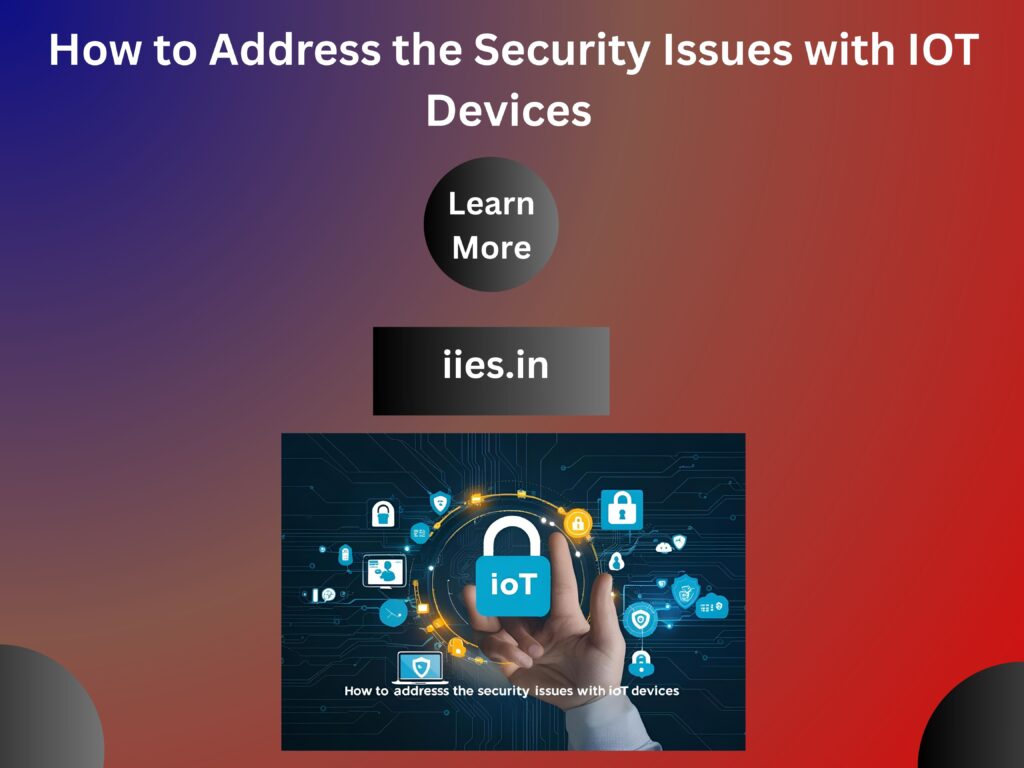1.Typical IOT Security Issues 1.Inadequate Authorization and Authentication
Since many IoT devices have weak authentication procedures and frequently use hardcoded or default credentials, attackers can easily target them.
2. Communication That Is Insecure
Sensitive information is vulnerable to interception or manipulation because data sent between IoT devices and their servers is occasionally not secured.Unencrypted or poorly secured data transmissions expose sensitive data. Implement encryption protocols like TLS, as outlined in this GeeksforGeeks IoT security guide.
3. Infrequent Updates
Due to their frequent manual upgrades or lack of support for over-the-air updates, many IoT devicesare susceptible to known flaws.WebbyLab emphasizes this as a critical security layer.
4. Limited Resources for Devices
IoT devices frequently have limited memory and computing power, which makes it difficult to apply strong security measures.Specialized hardware components like Trusted Platform Modules (TPMs) can help, as discussed by Device Authority.
5. Hazards to Physical Security
Many IoT devices are vulnerable to theft or physical manipulation because they are placed in accessible or public areas.Kaspersky advises encrypting both stored and transmitted data to protect user privacy.
6.Inadequate Data Security
Sensitive or personal data gathered by IoT devices may be compromised due to inadequate data management procedures.
7. Inadequate Management of the Device Lifecycle
The attack surface grows over time because IoT devices are frequently not tracked from deployment to decommissioning.Refer to this IEEE whitepaper for guidance on end-to-end device management.
Strategies for Mitigation
1.Robust Authorization and Authentication
Steer clear of default credentials and use multifactor authentication (MFA). To restrict permissions, use role-based access control, or RBAC.
2. Protocols for Secure Communication
For all data transfers, use encryption standards like TLS. When appropriate, use private networks or VPNs.
3. Frequent Firmware and Software Upgrade
Turn on safe, automated updates to swiftly fix vulnerabilities. Keep your updating infrastructure dependable.
4. Security Based on Hardware
To store credentials and sensitive information, use trusted platform modules (TPMs) or secure components. Put tamper-resistant or tamper-evident designs into practice
5. Device Logging and Monitoring
Keep an eye out for irregularities in network traffic and device activity. To aid with incident response, put centralized logging into place.
6. Compliance with Data Protection and Privacy
Limit the amount of data that is collected to what is absolutely required. Make that all data, both in transit and at rest, is encrypted or anonymised.
7.Management of Lifecycles
At the end of a device’s life, securely decommission it and remove any data. Keep track of the firmware versions of every IoT device that has been deployed.
Conclusion
IoT devices increase the cybersecurity attack surface even though they provide enormous benefit. Organizations may greatly strengthen their IoT security posture by tackling common vulnerabilities through best practices in device management, upgrades, encryption, and authentication. For a broader look at emerging threats, see this DesignRush article on the top IoT security issues of 2024.
For a broader security strategy, see Microsoft’s IoT security best practices.

